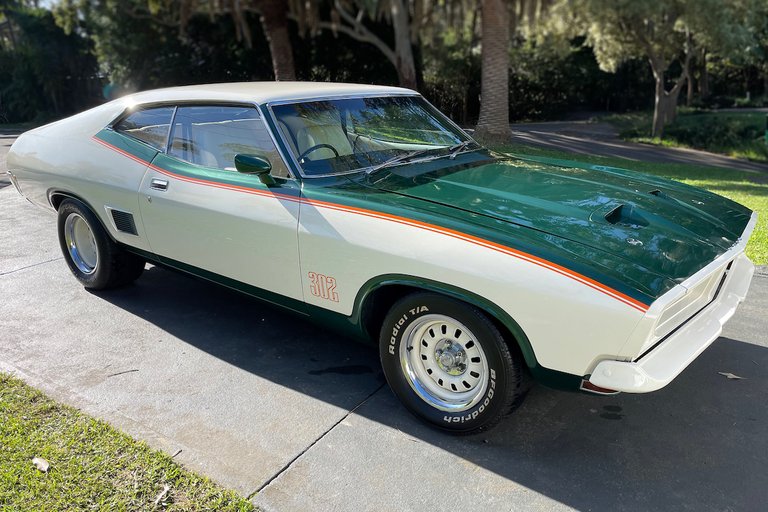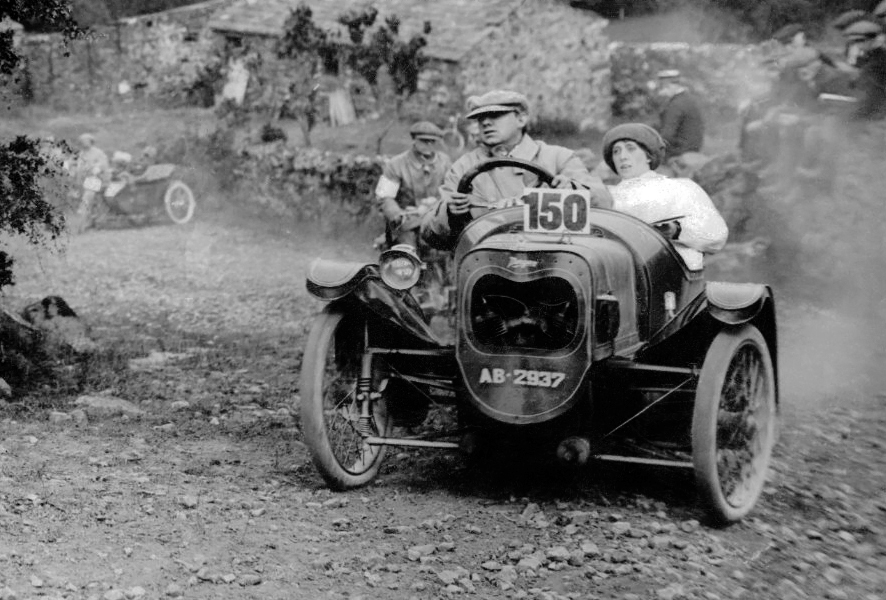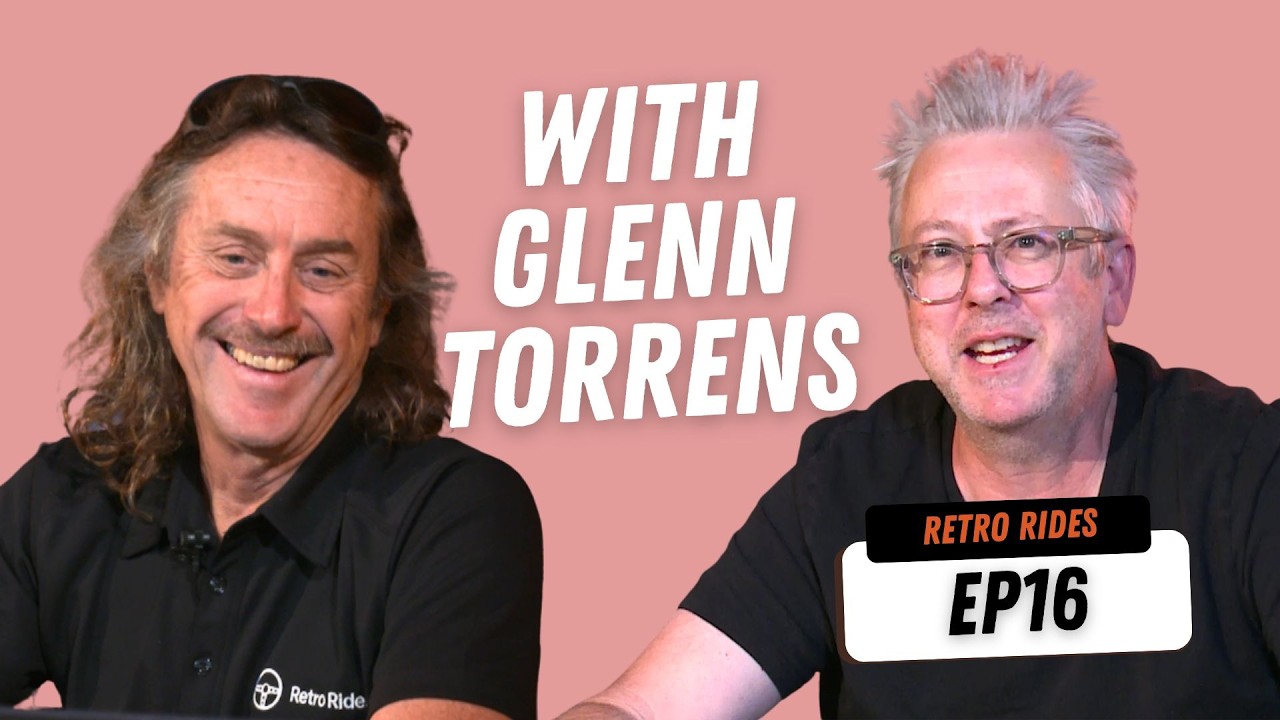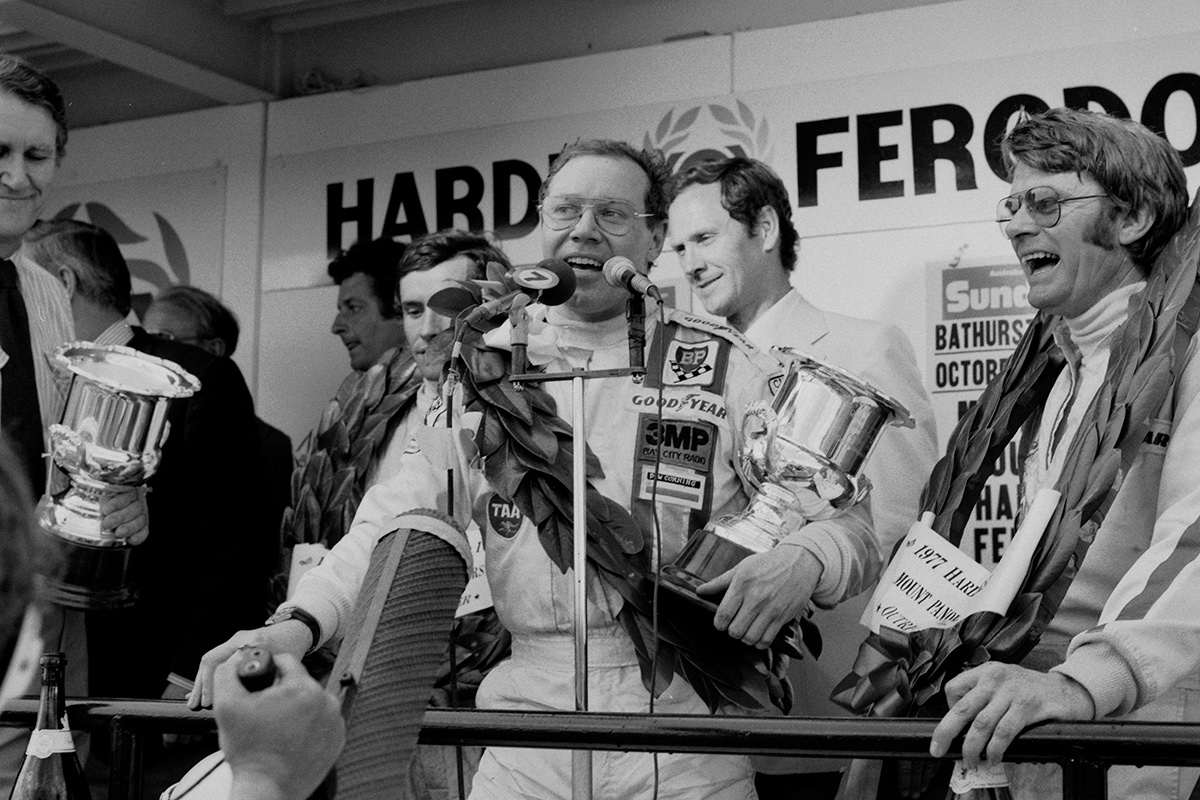Just 700 examples of the XB Falcon John Goss Special were built to commemorate the 1974 Bathurst winner
To celebrate the Goss team victory of 1974, Ford Australia released a special edition Falcon Hardtop in August 1975. No doubt this was to take advantage of the interest in Australia’s two most well-known races, the endurance events at Sandown and Bathurst.
John Goss was a popular motor racing driver of the time and had been a regular on the Bathurst grid since 1969. Before his eventual win there in 1974 he’d posted the fastest lap during the 1970 race in his XW Falcon GTHO Phase II, and the following year beat big name drivers like Fred Gibson and Colin Bond in rounds of the Toby Lee Series at Sydney’s Oran Park.
In 1972 Goss won both the South Pacific Touring Series and the Sandown 250 endurance race, and put his XY Falcon GTHO Phase III on the front row of the Bathurst grid that year, before engine failure ended his race.
Clearly, the Goss Train had been coming for some time, gathering pace and experience ahead of his breakthrough win in the 1974 Great Race.

In 1974, John Goss and Kevin Bartlett battled appalling weather to bring their Falcon XA GT Hardtop home a winner
Goss’s success hadn’t gone unnoticed by Ford’s marketing department either, who used the driver in TV ads to promote the XB Falcon in one of the early examples of linking products to ‘personalities’.
Despite the Falcon GT Hardtop’s brutish good looks and its success at Bathurst and elsewhere on the ATCC circuit in 1973 and ’74, sales of Ford’s Aussie coupe made up single-digit percentages of overall Falcon volumes.
Pragmatic Aussies, it seemed, weren’t nearly as enamoured with two-door muscle cars as their US cousins. Ford Product Planner David Ford’s lowball hardtop sales projections, made during planning sessions for the XA Falcon in the 1960s, were proven correct.
Faced with the task of driving sales of the big coupe, Ford’s marketing gurus hit upon the idea of the John Goss Special. After all, with back-to-back Bathurst wins to the Hardtop’s credit – with Goss in ’74 and Allan Moffat the year before – and a telegenic and popular driver willing to put his name to the car, it was well worth a shot.

John Goss Special models were offered with two accent colours, Apollo Blue or Emerald Fire, to contrast the otherwise Polar White bodywork (Image: GTHO/Wikimedia Commons, CC BY-SA 3.0)
Based on the XB Falcon 500 Hardtop, not the higher spec and higher performance GT, the John Goss Special or simply ‘The Goss’ as it is known came with a fixed set of specifications, including sports-tuned suspension.
The coupe was available in a choice of two accent colours, Apollo Blue metallic or Emerald Fire (green) metallic, offset against the body colour of Polar White. The metallic paint, which was specified on the cars’ compliance plates, covered the bonnet, engine bay, chassis, and sections of the A-pillar and waistline, as well as the lower sill sections and the rear panel between the tail-lights. A bright orange stripe between the two main hues creates a unique colour combo that five-decades later instantly signals the car’s provenance, as does the prominent ‘302’ lettering in the same bright orange on the front guards.
The coupe rode on Ford’s 12-slot steel wheels, freshened-up with a coat of matching Polar White, which was also applied to the bumper bars and the front grille assembly. Some Ford dealers opted to replace the white 12-slotters with alloys that were wider and did a better job of filling out the hardtop’s voluptuous wheelarches.
Other styling enhancements included a GT-style vented bonnet with hold-down pins, cosmetic side body vents from the GT Hardtop, a three-spoke sports steering wheel and full instrumentation. Elsewhere inside, the Goss came only with an all-white vinyl interior offset against a black dash and floor carpets.
The engine in all Goss cars was the Australian-made 302-cubic inch (4.9-litre) Cleveland V8, not the 351-cubic inch (5.8-litre) V8 of the GT, mated to either three-speed auto or four-speed manual transmissions. The 302 produced 179kW/409Nm, which was solid enough but paled against the 351-equipped GT which made a more robust 223kW/515Nm.
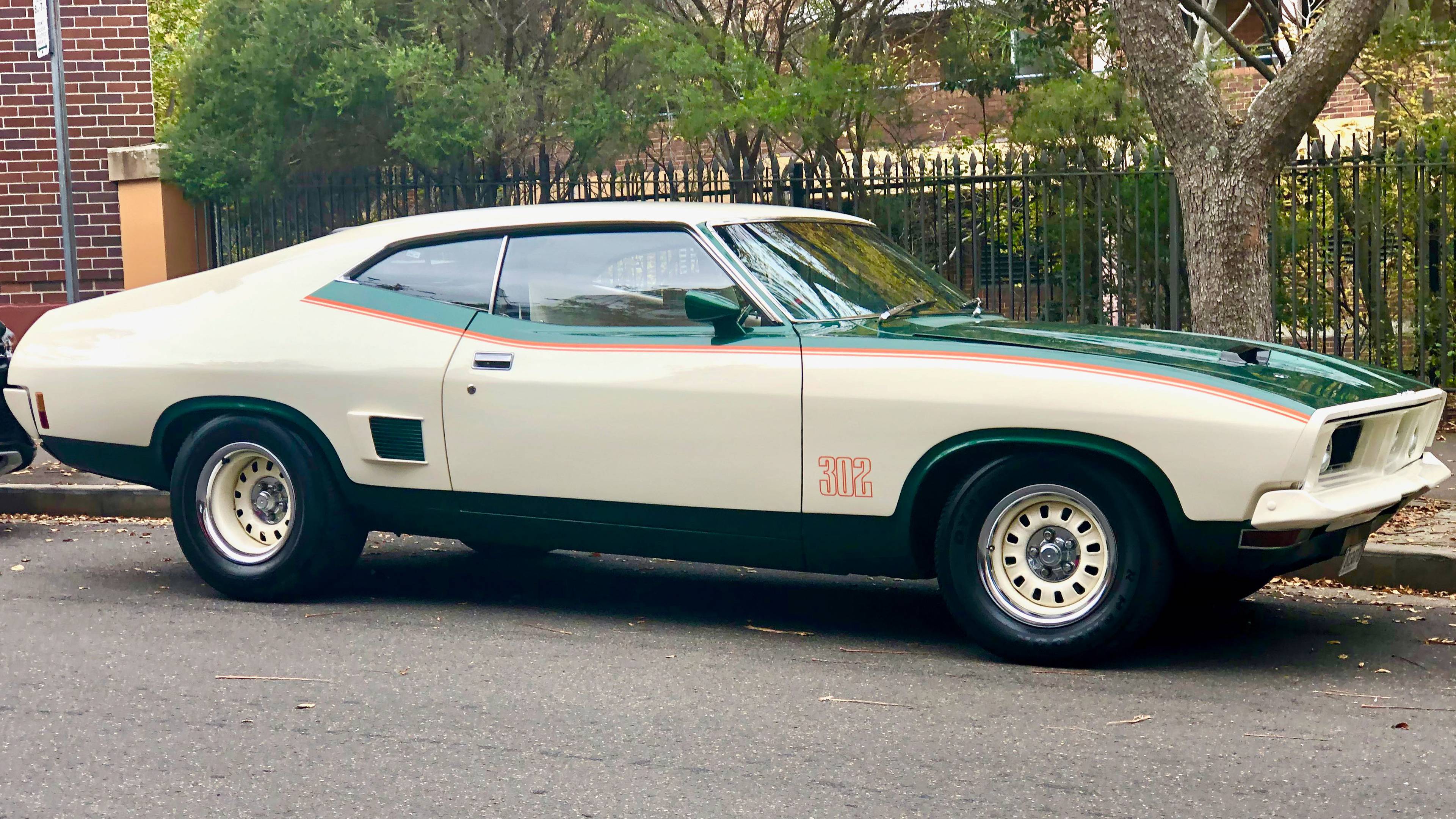
All John Goss Special models featured the Aussie-made 302 Cleveland V8, and while its performance was solid enough, it paled against the 351-equipped GT model
Retro Rides’ market analyst Cliff Chambers interviewed John Goss on the subject a decade ago and was told that the car was originally meant to be closer in concept to the GT, but Ford decided that getting it to perform with the emission-controlled engine was too hard, so they opted to make it more of a ‘show pony’.
The John Goss Special was never a limited edition, numbered car, but credible sources confirm that 700 cars were made, comprising an initial run of 400 in July 1975, followed by 300 more when the first lot sold out and demand was unsatisfied. More blue/white cars were made than green/white and the manual-to-auto spilt was 386 to 314 respectively.
The Goss was one of the first Aussie-made cars that paid homage to a circuit racing legend. In 1975 when the Special was announced, it was to signify the Goss/Bartlett victory at the previous year’s Bathurst 1000. However, a year later in 1976, Goss would also become the only driver ever to have won our most prestigious Touring Car race and the Australian Grand Prix.
Goss Hardtops aren’t the common sights they once were, but when one does break free from its collector’s grasp, the bidding (for an excellent manual car) will typically start above $100,000 and in some cases reach $170,000.
In addition to being scarce and vastly more valuable than they were 20 years ago, Goss Specials are also undisputed icons of the 1970s. x
In the next instalment: I bought one! Retro Rides’ boss Cam Jurd tells us about his love affair with his own John Goss Special.

